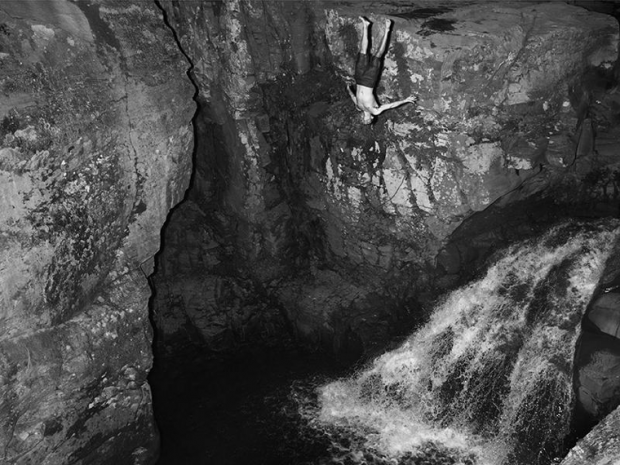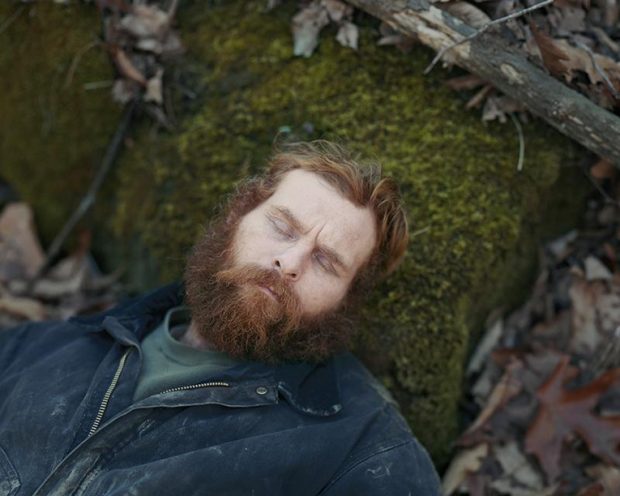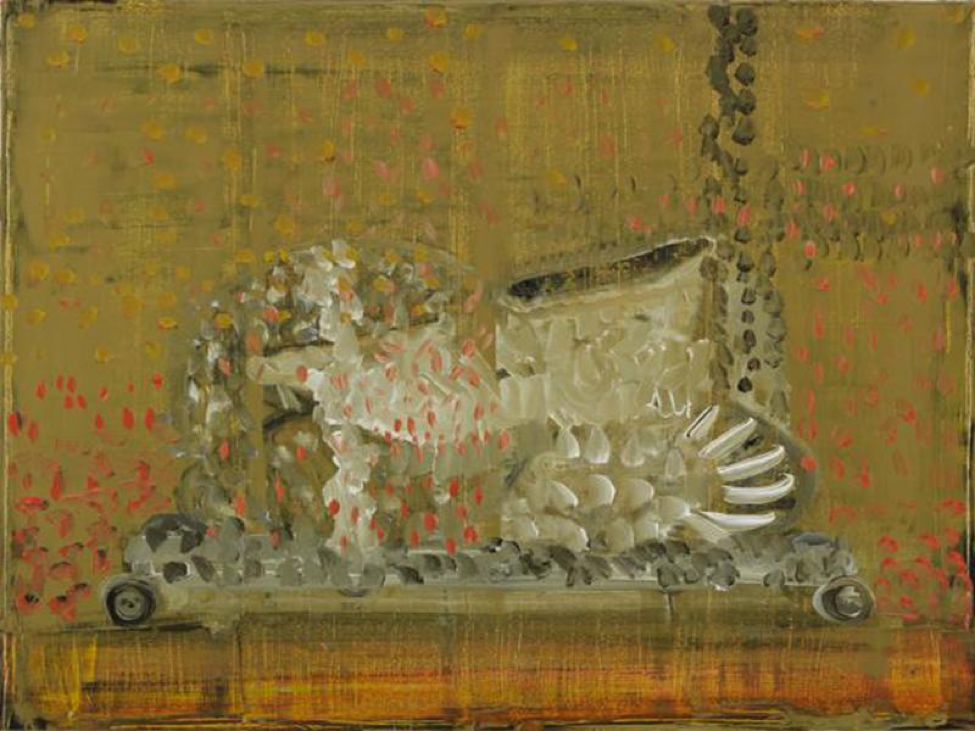
The concept of ‘revision’ is often viewed as the process of returning to something and reevaluating what it was and how it was interpreted at the time. In this edition of Picture This we see revision as as a concept of revising based on new evidence, returning to something and reconsidering it, re-examining and creating something new, and to rethink what was and what will be. In Dublin we see The Douglas Hyde Gallery re-present a selection of Alec Soth’s past projects under a new theme, in Belfast Exposed we see Yvette Monahan reassess the legacy of a landscape on its inhabitants, in Sligo’s The Model we see a reappraisal of Jack Butler Yeats’ A Broadside and the importance that this publication had at time of it’s release and its continued legacy since and in Limerick we see the personal reconsidering and reviewing an artist experiences in Sinéad Ní Mhaonaigh’s latest show in Limerick City Gallery of Art. These fours shows across a broad sets of mediums provide an opportunity for reflection and consideration as well as providing visually stunning treats. All four galleries also have sister shows running doubling the reasons to go and visit!
Belfast: “Monahan explores how the mythologies and legends of an area can they be shaped by the passing of time – and also how they have shaped the people of that environment themselves.”
‘The Thousand Year Old Boy’ © Yvette Monahan, 2015
What: The Thousand Year Old Boy
Where: Belfast Exposed
When: 5th August to 1st October
The story behind Belfast Exposed’s latest exhibition, The Thousand Year Old Boy, is as intriguing and fascinating as the imagery created and presented by Irish photographer Yvette Monahan. In 2006 a team of archeologists discovered the remains of a Bronze Age boy while exploring a cave in The Burren, County Clare. As part of their research into the area the team conducted DNA tests on 150 children in a local school. This was done in order to map the relationship between the boy discovered and the current inhabitants of his once Bronze Age landscape. Remarkably they discovered a link, a DNA match with a single boy. Even more remarkable is the fact that this match, a fellow Burren boy, lived less than a mile from the discovery site. Using this anthropological discovery as a departure point, Monahan explores how the mythologies and legends of an area can be shaped by the passing of time – and also how they have shaped the people of that environment themselves. The landscape becomes a keeper of tales and a witness to what has passed. We often retrospectively look back or ponder forward, frequently these can be two unrelated experiences. In The Thousand Year Old Boy they become one and the same journey. The discovery of a DNA match is not an endpoint but a continuation point, the images presented are not a full stop but a comma. Monahan has captured a narrative that is transition and is ephemeral, this allows her viewer to extract their story and as such cast their own future. The Thousand Year Old Boy as a show ends on October 1st, as an idea it will continue on for many, many years.
Full details on the show are available here.

‘The Thousand Year Old Boy’ © Yvette Monahan, 2015
Dublin: “There is an element of macabre and humour and these help blur the lines between fantasy and reality and enhance the dreamlike state proposed by Soth in Hypnagogia.”
Park Hyatt Hotel, Tokyo, 2015 © Alec Soth
What: Hypnagogia
Where: The Douglas Hyde Gallery
When: 5th August – 21st September
Hypnagogia is the latest exhibition in Dublin’s Douglas Hyde Gallery and features the work of much acclaimed photographer Alec Soth. This new show has been gather together from the American’s previous bodies of work – including Broken Manual, Sleeping by the Mississippi and 2015’s Songbook. When presenting a selection of single images from previous series you always run the risk of an exhibition where the whole is not greater than the sum of its parts. This difficulty is navigated and avoided through two key elements within Hypnagogia. Firstly the careful curation of the works within the space, and secondly the themed narrative which the works displayed share within Soth’s past projects. If you visit this show, curiosity will invariably draw your eye to the left of the main space when you leave the bottom of the staircase. Presented is a large format wall print featuring a self portrait of the artist in Tokyo. This dwarfs the first of a trio of smaller pieces to its right, entitled Sleepwalker. This begins a journey that sees 19 images interwoven together and featuring a variety of framing, sizes and dates. Around to the right, and in the sunken section of Gallery 1, are five black and white portraits featuring a man, 3 sheep and a falcon. Initially these pieces seem to jar with the aesthetics of the other images but it is here that the second key element of the show rings loudest. Soth advises that the works presented communally refer to Hypnagogia – a 19th century term that explores the heightened creativity experienced in the state between wakefulness and sleep. This focuses the viewer’s critical eye and sees a strong body of single images become a cohesive and equally strong exhibition. There is an element of macabre and humour and these help blur the lines between fantasy and reality and enhance the dreamlike state proposed by Soth in Hypnagogia. Any remaining shackles are lifted and the viewer is free to explore their own narrative and journey within the images – a journey that ensures that this exhibition is greater that the sum of its parts.
Full details on the show are available here.

Kaaterskill Falls, 2012, © Alec Soth
Sligo: “This dual presentation of century old Irish poetry and illustrations marks a key historical document.”
A Broadside, The Model
What: Jack B. Yeats: A Broadside
Where: The Model
When: 24th March – 28th August
2016 has provided Ireland with many memorable anniversaries. From the centenary of The Rising to the 150 year anniversary of the births of Sir John Lavery and George Bernard Shaw. Whenever these occasions arise it presents us with an opportunity to reassess and review our cultural and artistic heritage. They also invariably bring a treasure troves of source materials from out of the woodwork. This year has seen many historical documents from the latter half of the 19th and the early decades of the 20th Centuries resurface from far and near. Among these is a stand-out gem re-discovered by Sarah and Robert Elgin from America – a full collection of A Broadside. A Broadside was a magazine illustrated and edited by Jack Butler Yeats and published with his sisters Elizabeth and Susan by the Cuala Press. This collection has now been presented to The Model in Sligo where it is now on display. Originally published between 1908 and 1915, prior to Yeats’ later exploration into expressionism, the works featured poetry as well as original illustrations by Yeats. This dual presentation of century old Irish poetry and illustrations marks a key historical document. Published in the years leading up to 1916 Rising, these pieces provided a crucial access point for the arts prior to a tipping point that has influenced Irish culture in many facets since. You could be forgiven for viewing this show as merely a historical artifact but it is so much more. As well as over a hundred hand coloured illustrations by Yeats we see the literary works of future Irish President Douglas Hyde and future Abbey Theatre founder Lady Gregory. In this weekend of Olympic beginnings it is also worth mentioning that Yeats himself provided Ireland with her first ever medal back in Paris in 1924 when he picked up Silver for his famous painting The Liffey Swim – a man of many talents broad and near.
Full details on the show are available here.
A Broadside, The Model
Limerick: “The use of Irish language hints further at this being space in both a personal sense as well as a broader cultural context.”
What: Dúil
Where: Limerick City Gallery of Art
When: 29th July – 4th September
Dúil is the latest exhibition by Irish painter Sinéad Ní Mhaonaigh and is currently on in Limerick City Gallery of Art. Ní Mhaonaigh has used Gaelic words as titles of her previous shows – including Imlíne, Eatramh, Imeall, Ardán which refer to Contour, Interval, Margin and Platform respectively. These titles suggest an artist keen to explore their relationships with both space and spatial interaction. The use of Irish language hints further at this being space in both a personal sense as well as a broader cultural context. As with many Irish words Dúil does not have a definitive translation into the English tongue, being both a word for ‘element’ or ‘thing’ but also for ‘desire’. It’s this dual usage, as a want and a object, that best typifies Ní Mhaonaigh work as the paintings themselves dance between control and frenzy, structure and free flow. This is further heightened by Ní Mhaonaigh’s technique of reapplication of paint on canvas. The 31 works on display possess a freedom from being tethered too much to a constitution and allow the viewer to flow between paintings formulating their own space, and as such context in which to view the work. This is an exhibition that is equal parts intriguing and engaging and runs until the start of September – be sure to catch it before it ends.
Full details on the show are available here.
Top photo: 2008_02zl0189, 2008, © Alec Soth









